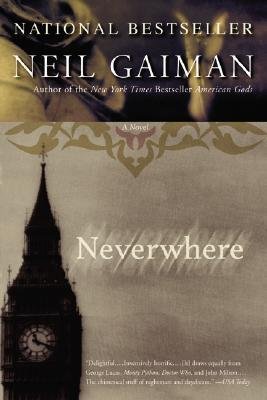Embracing the Shadows: A Journey Through Neverwhere
Neil Gaiman’s Neverwhere caught my attention for a couple of reasons. First off, the concept of a hidden world lurking beneath the familiar shadows of London intrigued me. Who wouldn’t want to explore a gritty, otherworldly dimension beneath their feet? Secondly, Gaiman is known for his whimsical prose and imaginative storytelling; he has a knack for weaving dark fairy tales that linger long after you finish the last page. So, I dove into Neverwhere, eager to be enveloped by its strangeness, but found myself grappling with some familiar criticisms.
Our protagonist, Richard Mayhew, is an office drone—a persona that I think many of us can unknowingly relate to. In a world full of “important people” and aspirations, Richard is tethered to a life that feels insufficient. His girlfriend, epitomizing the ever-so-slightly predatory type, envisions a better version of him rather than cherishing who he is. This dynamic paints Richard as a hapless everyman, which can be frustrating, especially when he seems more of a puppet than a hero, stumbling through his journey from being evanescent to, well, still evanescent by the story’s end.
Gaiman constructs a labyrinthine plot that begins with a classic twist: Richard’s chance encounter with a bloody, ragged girl named Door plunges him into the murky world of London Below. Kicking in the door to a place populated by quirky characters, sinister villains, and whimsical rats, the narrative fairly dances with darkness and light. Yet, while I appreciated the vibrant world-building and clever nods to fairy tales, I couldn’t shake the feeling that I was walking down a path I’d traversed before in Gaiman’s works.
Throughout Neverwhere, Gaiman’s narrative is delightful, reading quickly with a sense of urgency. The dialogue is sharp, laced with humor that often caught me off guard. For instance, Richard’s inner musings about a couple engaging in passionate public displays of affection made me laugh—there’s a definite relatability in his frustrations. Moments like “the least erotic display of banana-eating” or the cheeky exploits of the character De Carabas are sprinkled throughout the narrative, reveals of Gaiman’s humor that soften the book’s darker themes.
However, my primary struggle came from how predictable the plot felt—Richard’s journey toward self-realization was so romanticized yet echoed like a familiar bell. Perhaps I am guilty of reading too many Gaiman stories, becoming all too accustomed to the motifs: orphans, hidden worlds, and predatory villains. The nuanced elements got overshadowed by a sense of déjà vu, leaving me feeling less enchanted than I had hoped.
By the conclusion, Richard had ostensibly transformed into a more capable version of himself. Yet, I found it hard to admire a character who seemed propelled not by his actions but by the plot itself—a disappointing result, given the raw potential this narrative held.
In retrospect, Neverwhere is undoubtedly a beautifully crafted tome that could enchant newer Gaiman readers and fellow fantasy aficionados with its rich themes and astonishingly vivid characterizations. The philosophical musings about London’s complexity flicker against a backdrop of dark humor that make it a compelling read; I was left with a mix of admiration and discontent.
If you’re stepping into Gaiman’s world for the first time, you’ll likely be blown away by his ability to conjure whimsy from shadows. For seasoned readers, though, it might feel too familiar—a journey through a terrain that, while picturesque, didn’t grip me as tightly as it might have when I was less traveled. In any case, Neverwhere remains an absorbing exploration that resonates with the curious heart yearning for adventure amidst the chaos of everyday life.
Discover more about Neverwhere (London Below, #1) on GoodReads >>







